There are many edible grasses that you can find growing wild around the world that you can eat. Most of us already do. Some are even cultivated as food crops.
However, not everyone knows how to identify these plants. This guide will teach you how to identify edible grasses you may not know about. I’ll also share what they look like, tips on where to find them, and how to prepare them. It’s a fun way to learn something new while eating nutritious foods.
- Related article: Guide to Wild Edible Plants
7 Key Takeaways on Edible Grasses
- Typical grasses aren’t easily digestible by humans. But seeds and certain grasses processed into flour can be nutritious.
- Boiling or grinding grass seeds makes them more digestible and nutritious. The green parts should be consumed in moderation.
- Bamboo shoots are edible and nutritious. But, they must be boiled to remove toxins before eating.
- Little barley grains can be dried, processed, and used to make nutritious flour or juices.
- Bluegrass is edible but not very nutritious — it’s primarily used as a pasture grass.
- Crabgrass seeds can be harvested and ground into flour. They offer a nutritious food source.
- Foxtail grass grains are similar to rice and are best eaten boiled to improve flavor and texture.
Can Humans Eat Grass?
Grass is not ideal for human diets due to its low nutritional value. However, in survival situations, it can be eaten. Many wild grasses, aside from cultivated types, are safe and can become nutritious with processing.
Typical grass is rich in cellulose, which our stomachs cannot digest. Herbivorous grazing animals, such as cows, have evolved digestive systems that allow them to break down grass cellulose.
Despite the cellulose in grass, humans have found ways to process a few types of grass. This makes them better for us. These have become staple foods all around the world. The well-known cereal grains like wheat, corn, and rice are all part of the grass family.
The best way for humans to get energy from grasses is by harvesting the protein and carb-rich seeds. They dry the seeds and process them to make them easier to digest. The most common way is to ground them into flour.
Can Humans Cook Grass and Eat It?
The best way to eat most grass is to separate the seeds from the leaves and stems. The grass seeds can be cooked and are much more digestible this way. When boiled, they soften and become easier to eat. You can make a porridge-like meal like breakfast cereals or soak them until soft.
If you’re not in a survival situation, the best way to prepare and use them is to dry and grind them. It is similar to how flour is made from wheat or corn.
On the other hand, the green parts can be cooked and eaten, but it doesn’t improve their nutritional value. The fibers of grass cannot be broken down by boiling. It’s also not a good idea to ingest too much of these greens, which could cause digestive issues.
What Are the Edible Grasses That You Can Eat?
There are about 780 genera of grasses, making it the fifth-largest plant family on Earth. Many of these grasses are not only edible but also beneficial for health. This includes some that grow as lawn weeds.
Let’s now look at the most common edible and beneficial grasses you can eat.
1. Bamboo (Bambusa species, Phyllostachys species, Guadua species, Arundinaria species) — Low in Calories and Rich in Dietary Fiber
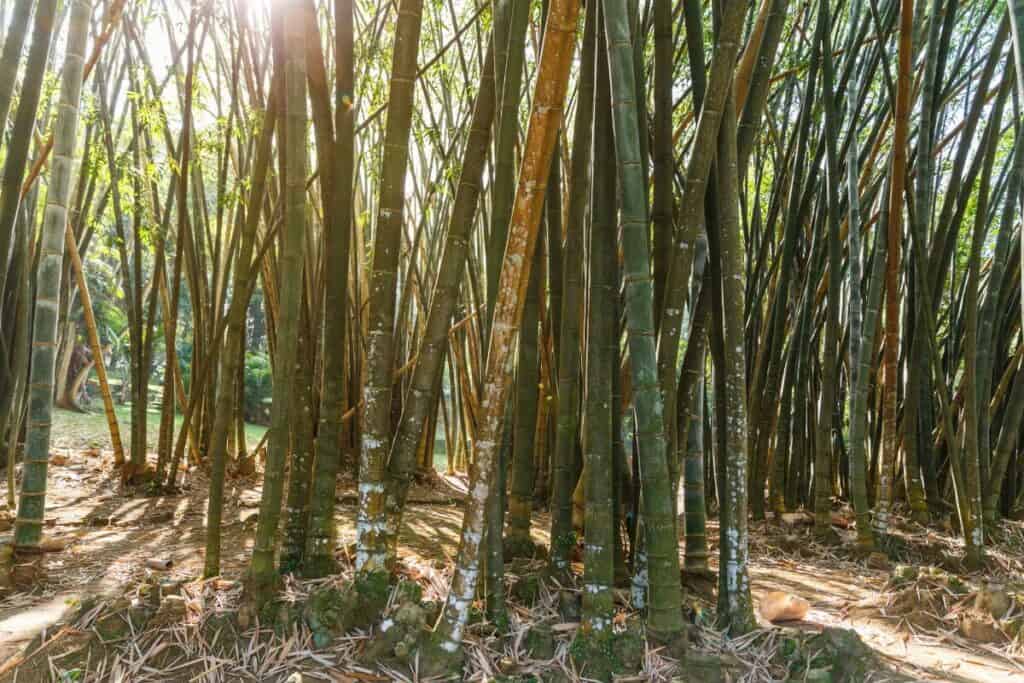
Bamboo is a well-known plant used in many cuisines, especially Asian cuisines. There are more than 100 edible species of bamboo, most of which are native to Asia and South America. This plant grows mostly along riverbanks.
Bamboo stalks must be peeled to remove the hard exterior layers, and the soft inner part should be boiled. It’s best to eat the young shoots, as they are softer. Eating raw bamboo is unsafe, as it contains toxic glycosides. The taste is quite mild, although, to some people, it tastes bitter.
Bamboo shoots are low in calories and rich in dietary fiber. They are also an important vitamin B, potassium, iron, and magnesium source.
2. Little Barley (Hordeum pusillum) — Great for Juices, Powders, and Occasional Remedies
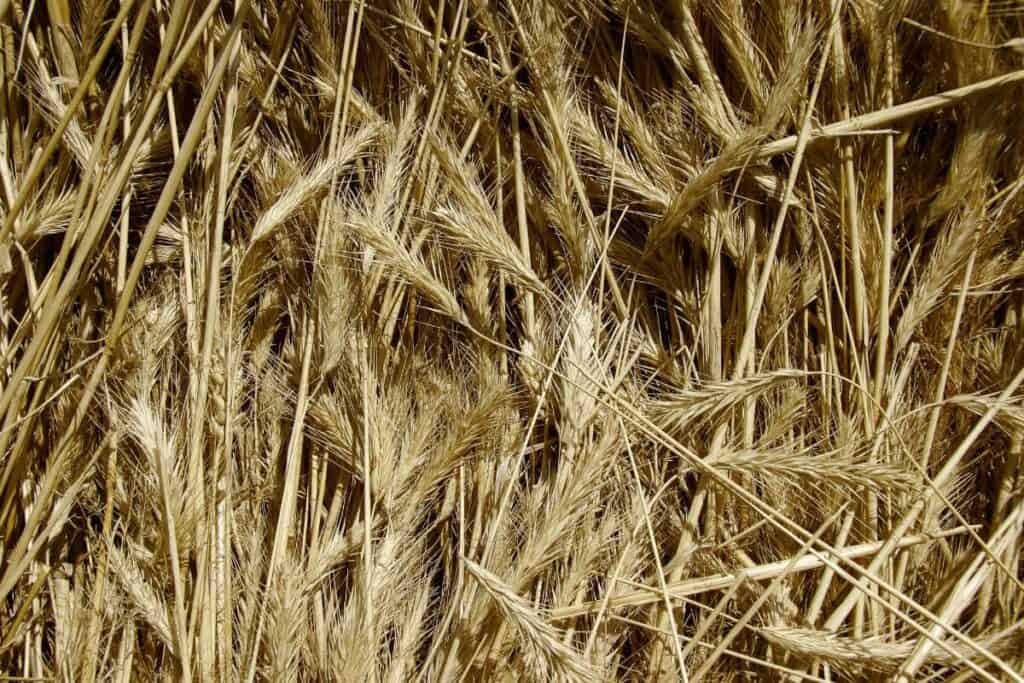
Little barley grass can be found in most of the U.S. and Canada. It’s closely related to other Hordeum species native to South America and derives from the cultivated Eurasian variety, Hordeum vulgare. It grows in sunny areas on dry soils and grasslands.
Barley grains must be dried, processed, and cooked before being eaten. They are often used to make juices or powders. It’s very nutritious and a good source of vitamins. Because of this, it’s sometimes considered a medicinal herb. It was also one of the staple foods of Native Americans.
3. Bluegrass (Poa species) — Ornamental Grass You Can Eat
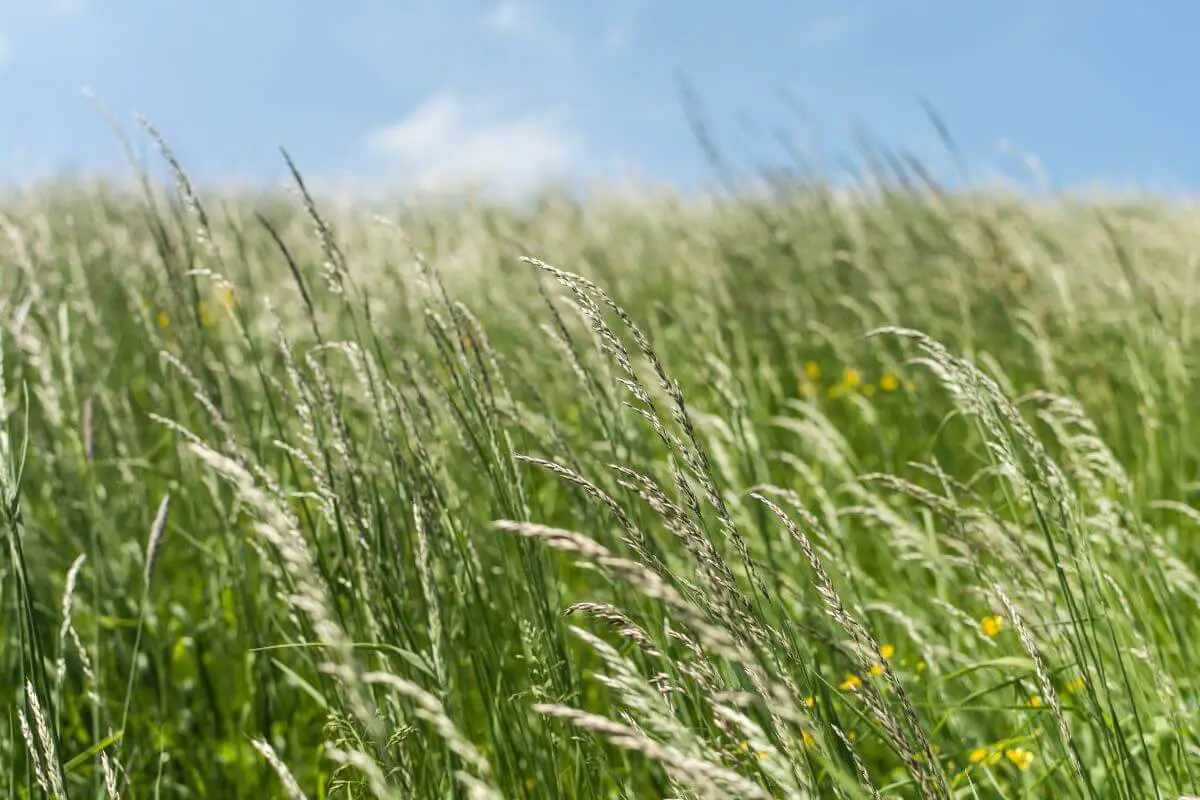
Many species of bluegrass grow in North America. The most well-known is Kentucky bluegrass (Poa pratensis). This species is not native to the U.S., but today, it’s common in all wet, cool areas.
Bluegrass is mostly used as a pasture grass. Some species are grown for ornamental purposes. While edible and can be eaten raw, it is not very nutritious.
4. Crabgrass (Digitaria species) — Nutritious Grass Used as Traditional Medicine and Animal Feed
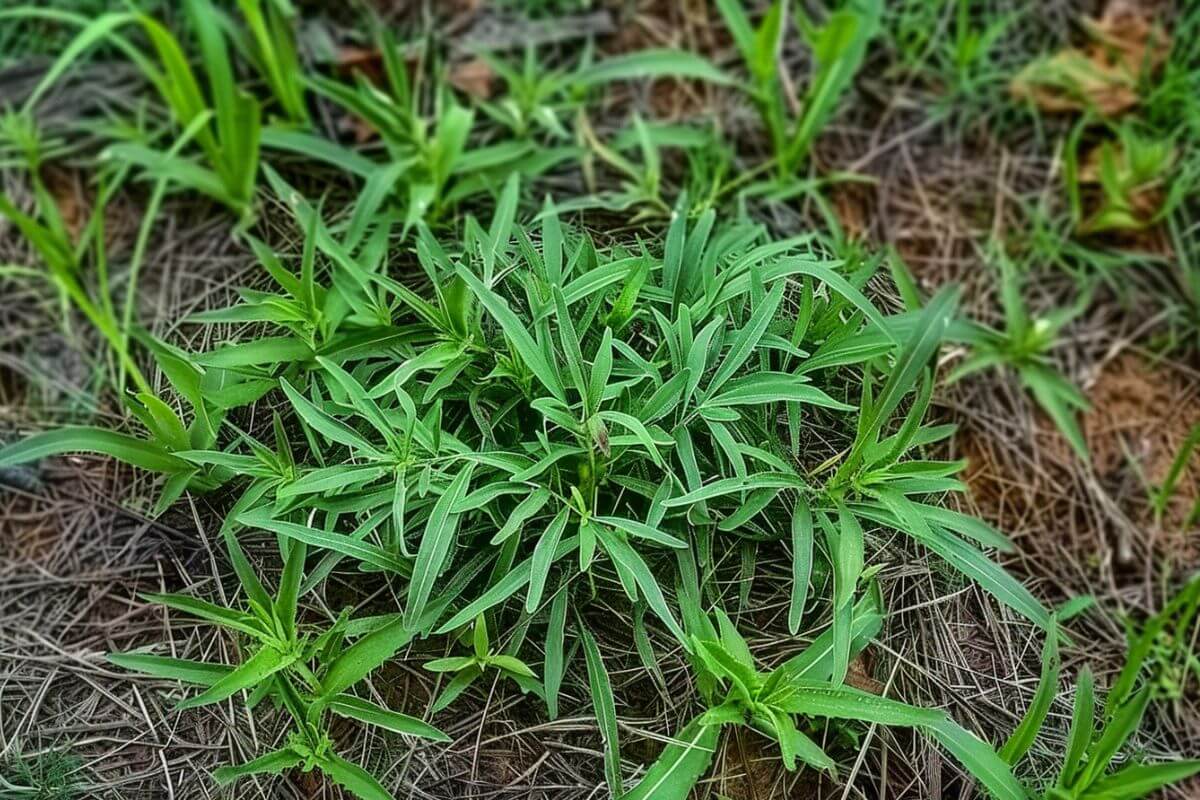
The U.S. has two main crabgrass species: large crabgrass (Digitaria sanguinalis) and southern crabgrass (Digitaria ciliaris). Both thrive in open, disturbed areas and are invasive, as they grow fast and can replace crops.
Crabgrass nowadays is mostly used as animal feed. In the past, though, it was cultivated for food and still is in some parts of the world. Its seeds can be harvested and ground into flour or used to make couscous.
This common edible garden weed is very nutritious. In traditional medicine, it is used to treat cataracts and gonorrhea.
5. Foxtail Grass (Setaria species) — Edible Grass With Rice-Like Grains
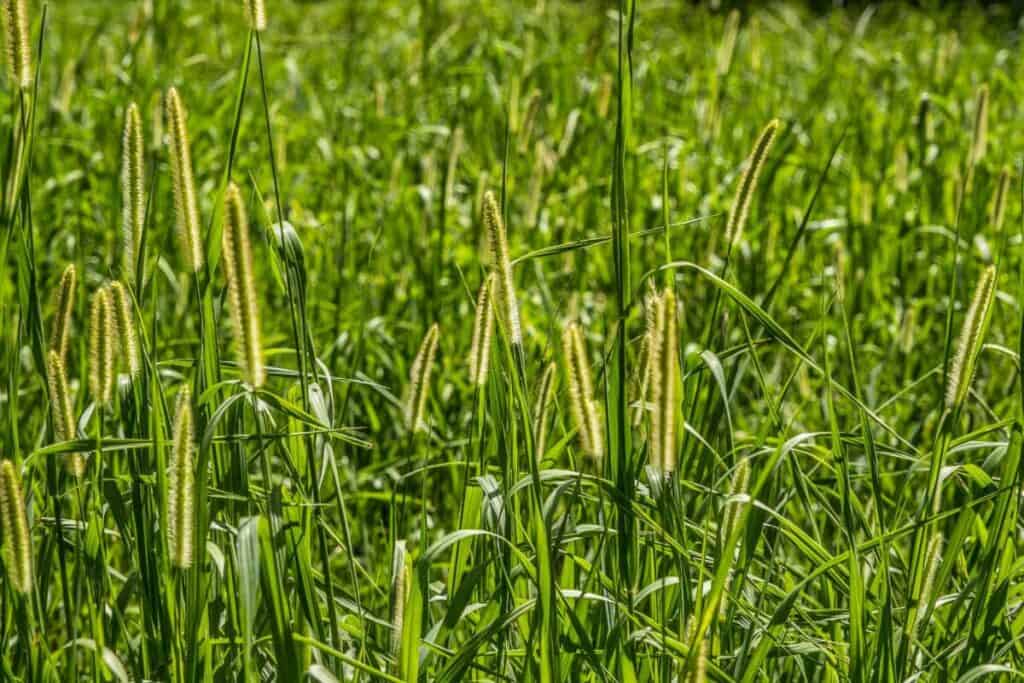
Foxtail grass grows in the U.S., Europe, Western Asia, and Africa. Most species thrive in open fields and roadsides, while others are more common in wet areas. In some parts of the world, foxtail grass is grown for food, as its grain is similar to rice.
Like most grasses, the foxtail plant is harvested for its grains. Although it can be eaten raw, it is bitter and has a hard texture. It’s best to boil it before eating, improving the flavor.
6. Goosegrass (Galium aparine) — Edible Grass You Can Use as a Coffee Alternative
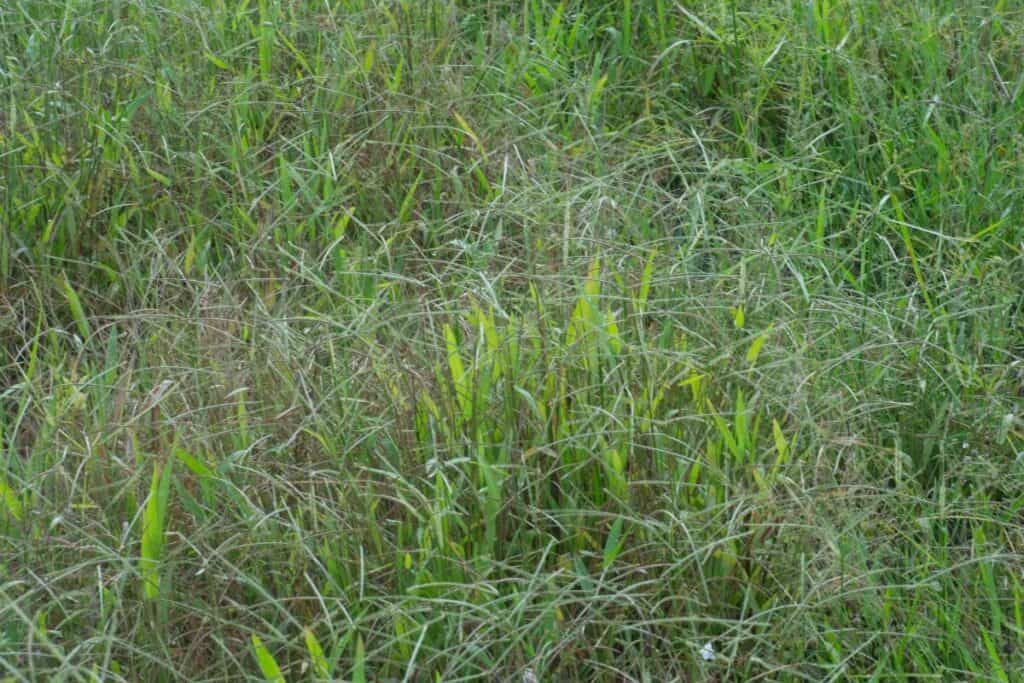
Goosegrass in wet areas, streams, and rich woods are common in North America. Its stems are covered with tiny hairs that cause them to stick to clothing. Goosegrass resembles other edible grass species, such as cleavers and bedstraw.
Due to its hair-covered stems, Goosegrass can look unappetizing. But these young greens picked in the spring will become very tender when boiled or steamed. The fruits are also edible and can be picked when ripe in June and July. After being roasted and ground, they are often used as a coffee alternative.
7. Lemongrass (Cymbopogon citratus) – For All-Around Flavoring
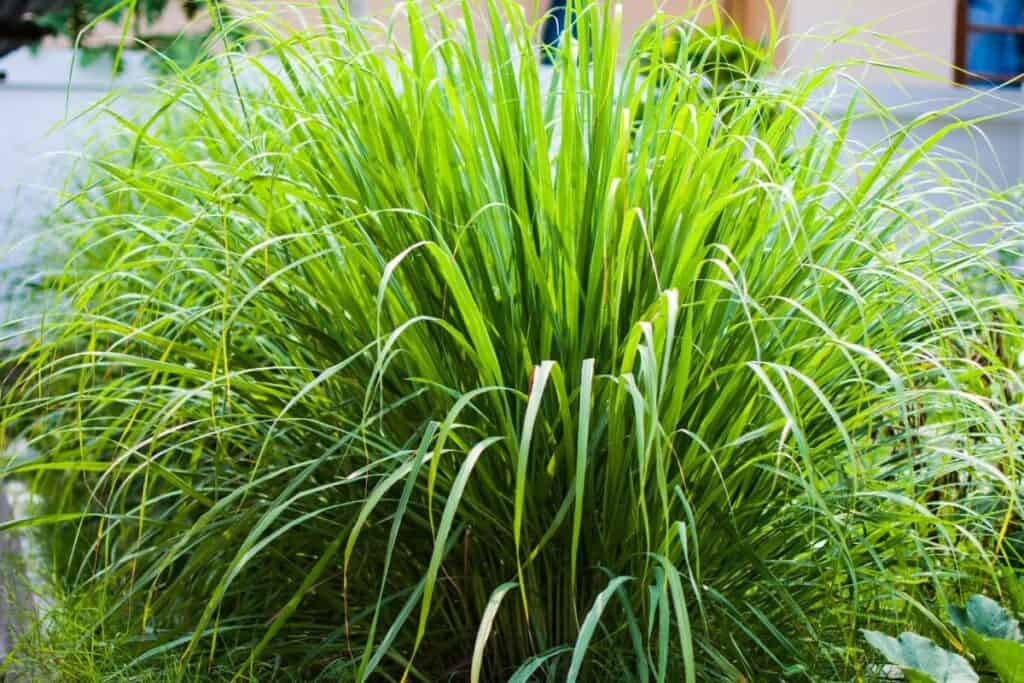
Lemongrass is a perennial plant native to Southeast Asia. It is grown in many tropical regions. It is found in the southern U.S. It is easy to recognize thanks to its citrus smell.
The delicious lemongrass can be eaten raw. It mostly adds flavor to soups, salads, stir-fries, or curries. It can be prepared in two ways. You can mash it into pulp and cook it slowly. Or, you can slice or mince it to add at the end of cooking.
Lemongrass has a lemony flavor. It is perfect when mixed with coriander, garlic, and chili. It can also be brewed to make herbal teas.
8. Wood Millet (Milium effusum) — Seeds Make Great Flour
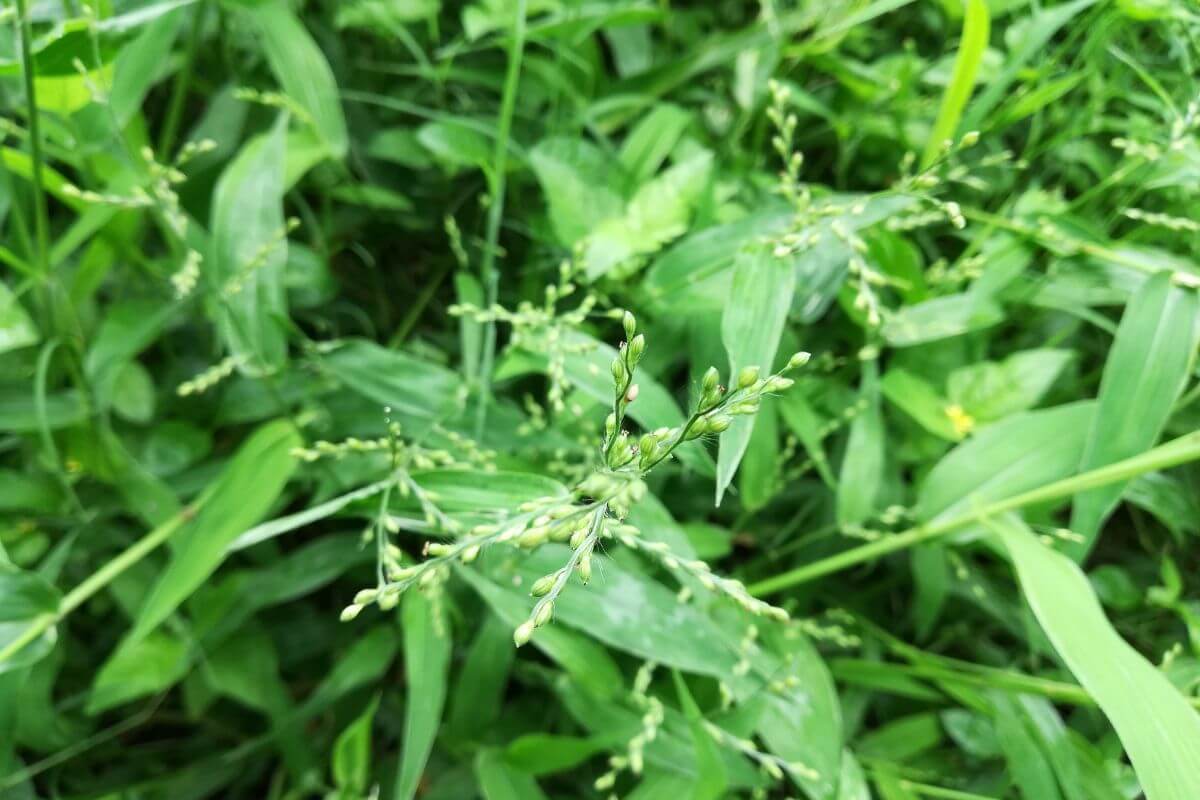
Wood millet grass grows throughout the northern U.S., Canada, and Europe. It’s not closely related to cultivated millet, which has many different species. Its native habitat is wet forests and shaded river banks.
The wood millet wild variety can be used much like the cultivated ones. Harvest and grind the seeds to make flour, which is most typically used to bake bread. Wood millet has a pleasant scent and appearance, so it’s also grown as an ornamental plant.
9. Orchardgrass (Dactylis glomerata) — Mostly for Survival Situations
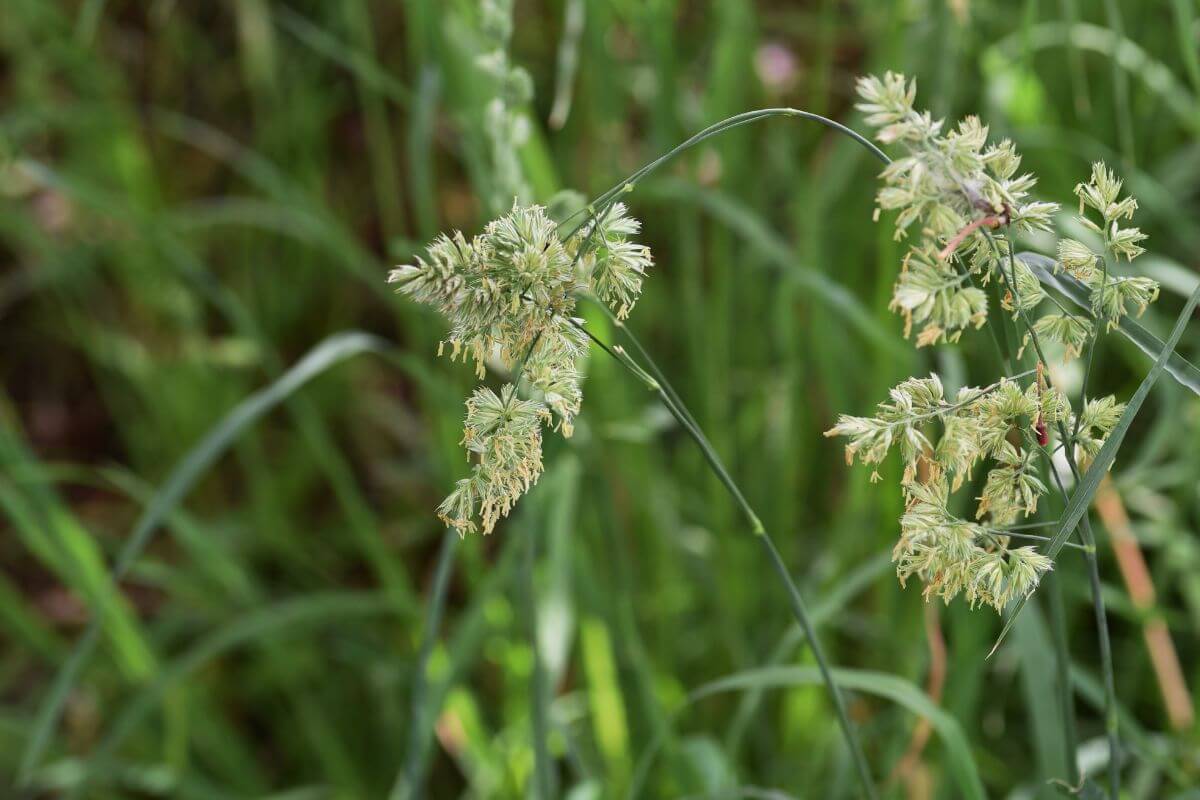
Orchardgrass is grown throughout the U.S. in rotation with other crops and is also found in the wild. It is adaptable and can be found in most sunny or partially shaded areas. This includes thickets, woodland borders, orchards, fence rows, and savannas.
Orchardgrass is mostly used for pasture and forage production. It is edible for humans. But it doesn’t provide enough nutrients to be worth eating. The exception is in survival situations.
10. Ricegrass (Zizania species) — High-Protein and Vitamin-Rich Grass
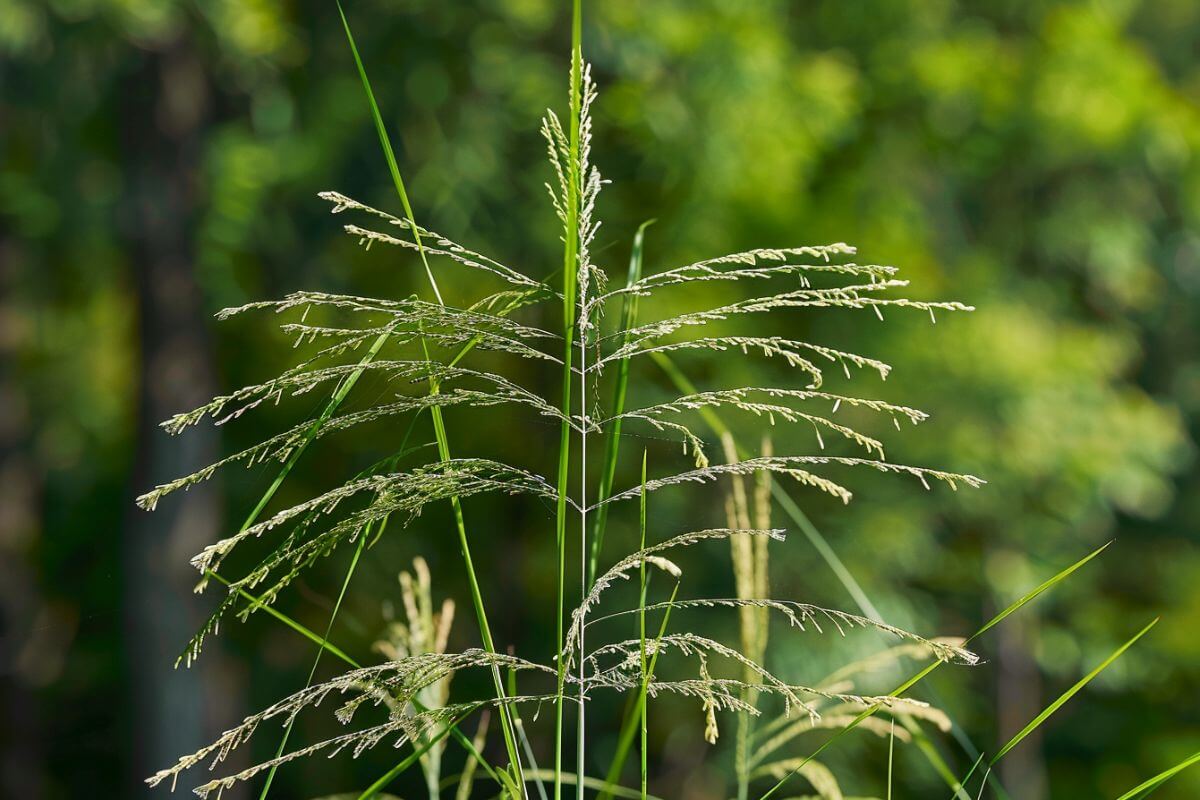
Wild rice is common throughout the continent. It was a Native American traditional food, but today it’s unknown in most areas. Nowadays, you can find “wild” rice in grocery stores, but it’s a cultivated variety far from the true wild one.
Before cooking, dry the ricegrass grains. Then, parch them to harden the kernels and rub them to loosen the chaff. Finally, winnow to remove the chaff. The rice should then be rinsed before boiling it.
Wild rice can be used in many recipes, from soups to porridge to bread. When fresh, the rice has a pleasant roasted taste from parching.
Ricegrass kernels have much protein. They also have more magnesium, phosphorus, zinc, potassium, and copper. They also have more thiamin, riboflavin, niacin, vitamin B6, and folic acid than white rice or corn.
11. Wild Rye (Elymus canadensis) — A Native American Food Source
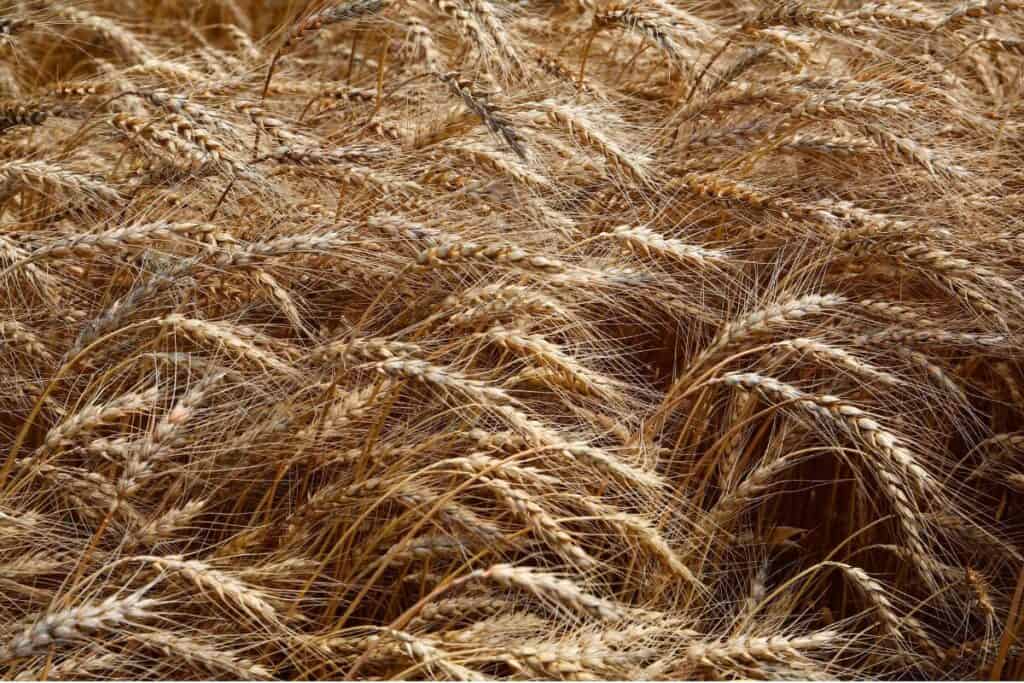
Wild rye, also known as Canada wild rye, can be found throughout North America. It’s adaptable and can grow in various habitats. This includes disturbed areas, prairies, woodlands, savannas, and sand dunes. Because of its substantial root system, it is often used to stabilize soils.
Wild rye seeds are edible and can be used to make flour. But they are very small and difficult to separate from the rest of the plant. Despite this, it used to be an important food source for Native Americans. This is thanks to its good nutritional value.
12. Sorghum (Sorghum bicolor) — Gluten-Free Edible Grass
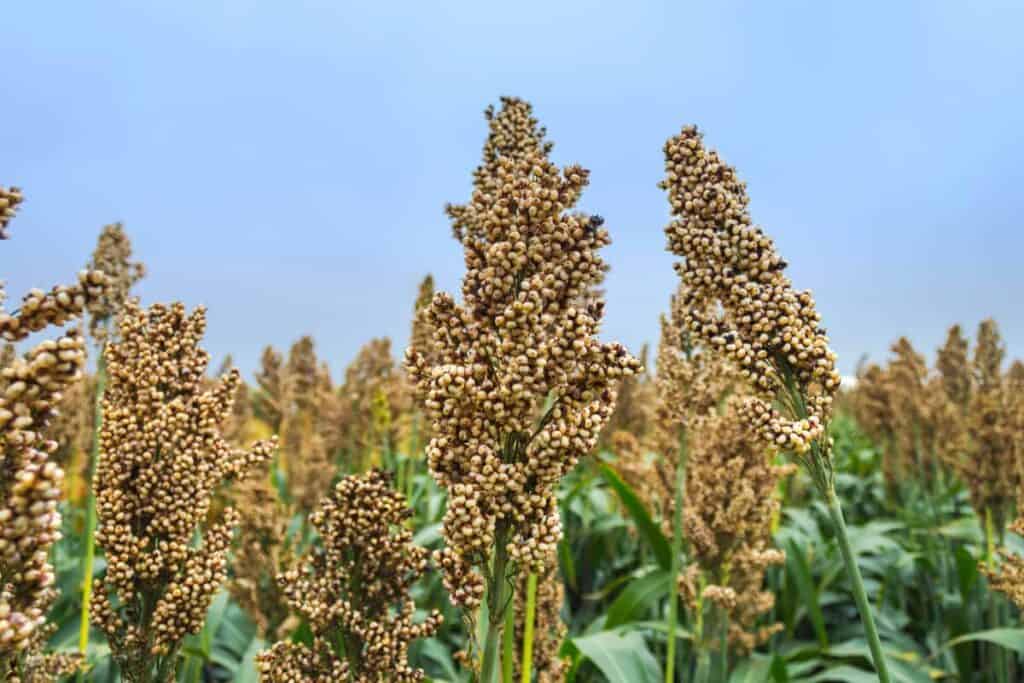
Sorghum grass can be found in the wild, but it’s also one of the most cultivated grains in the world. It’s native to Africa, but today it’s common on many continents, including the Americas. Specific varieties are cultivated for different uses. This includes human consumption, animal feed, beer, and broom production.
Wild sorghum grass has smaller grains than farmed ones but is also edible. Its gluten-free grains can be milled into flour. This flour is ideal for baking, especially for people with celiac disease.
Sorghum has lower nutritional value than corn. However, it is rich in protein and carbohydrates. It’s important to avoid harvesting wilted or immature plants. These could contain toxic substances.
13. Sugarcane (Saccharum species) — Best for Sugary Sweet Snacking
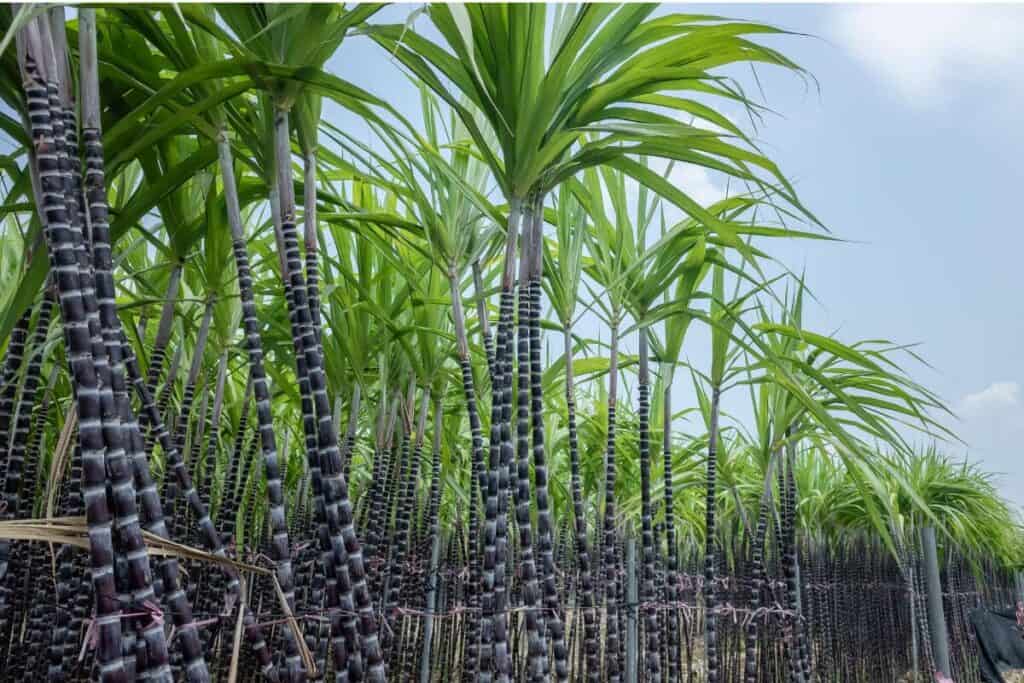
Sugarcane is native to the tropics and is grown in around 111 countries for sugar production. In northern America, it can rarely be found in the wild. But it’s cultivated in the states of Florida, Louisiana, and Texas. A wild species (Saccharum spontaneum) is common in the Pacific Basin.
Sugarcane can be eaten raw by chewing the stalks to taste the sweet interior. It is also used to make a very sweet juice. What is left after drunk juice should be discarded, as it’s very fibrous and difficult to digest.
14. Wheatgrass (Triticum species) — Nutrient-Packed Grass With Medicinal Properties
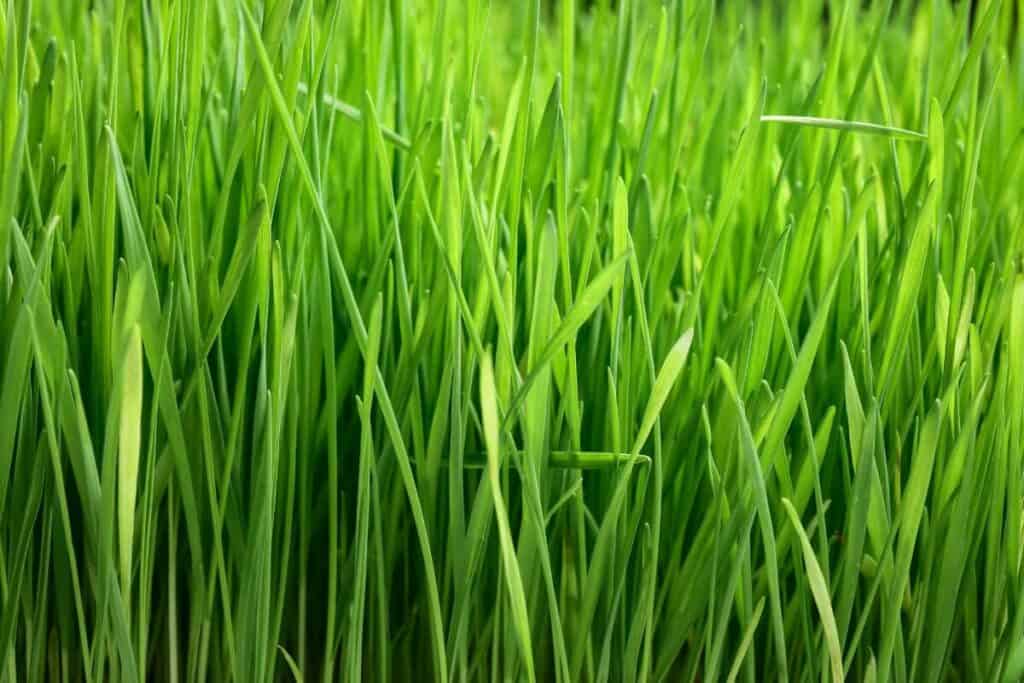
Wheatgrass is the second most produced cereal worldwide, just after corn. People first domesticated it from wild varieties. This happened in the Eastern Mediterranean around 9600 BCE. It is now cultivated all over the world. Wheat no longer exists in the wild, as it cannot reproduce autonomously.
What is known as wheatgrass consists of the plant’s fresh sprouts and grass blades. These are green and tender and are often used to make juices. They are also reputed to have medicinal properties.
While this has not been confirmed scientifically, wheatgrass is a good source of proteins, calcium, iron, magnesium, phosphorus, and vitamin E. It is a wheat product, but it does not contain gluten. So, it is ideal for a gluten-free diet.
15. Wild Oats (Avena species) — Nutrient and Fiber-Rich Breakfast Food
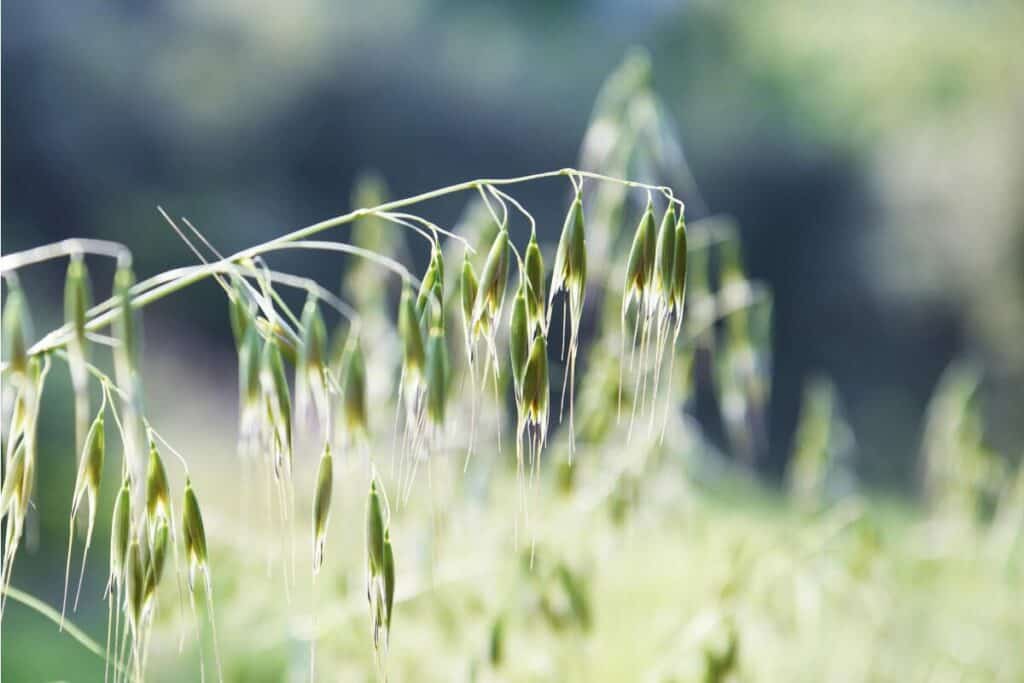
Oats are annual grasses native to Africa and Eurasia. They are naturalized in most temperate areas. Many species of oats are cultivated for hay or forage for farm animals. This species has become widespread in North America in fields and along roadsides.
Wild oats can be dried, and the grains can be ground to make flour or eaten whole. Oats can also be sprouted. They can also be used to make juice, a popular plant-based milk alternative.
Like their cultivated counterparts, wild oats have excellent nutritional values. They are rich in protein, magnesium, and iron and contain good amounts of dietary fiber.
Edible Grasses Final Thoughts
Grass is one of the oldest crops on Earth. Its cultivation dates back more than 10,000 years. Today, thousands of different types of grasses are used for food, feed, and fuel. Some are even used for ornamental purposes.
From the low-calorie and fiber-rich bamboo to the versatile Lemongrass, many edible grasses can improve your diet. While not all offer substantial nutrition, they are useful to know, especially in survival situations.
Discover which grasses are edible. You might not eat them daily, but they could prove useful when you least expect it.
For more on edible plants, check out these articles:


Are you sure that sugarcane is grown in 195 countries? That seems way too high as that would mean it is grow in every country on earth.
You’re right! It’s actually 111 countries that produce sugar. Thanks for catching that.
I was hoping to find out if the nuts of all nut grasses are all edible. I’m growing Nigerian tiger nuts and have found similar looking grasses in my garden in Cape town and I’m wondering if their nuts are also edible as they do have them on the roots.
I know that tiger nuts are edible, but I’m not sure about the other nuts and roots you’re referring to?
Is there a kind of lawn that I can plant and eat the grass clippings?
There are, but I wouldn’t eat any of the grass clippings 🙂 It’d be better to use the grass clippings in your compost pile.
If one is allergic to grass (yard) would that be the same family of the edible grasses? Wasn’t sure about trying the types listed here for nutritional purposes.
If you are allergic to yard grass, it doesn’t necessarily mean you will be allergic to all types of edible grasses. Yard grasses (such as Bermuda grass or Kentucky bluegrass) and edible grasses (such as wheatgrass, barley grass, and bamboo) belong to different genera and can cause different allergic reactions. The grass pollen proteins that cause the allergic reactions are different for different edible grasses. If you want to try the different grasses, start small and see if you have any symptoms.